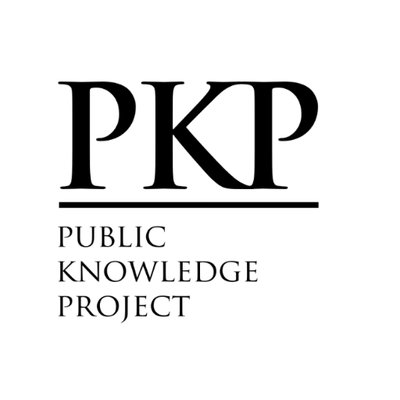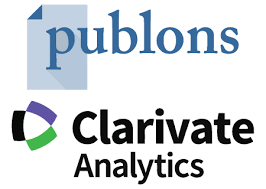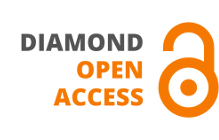concept of intangible capital: the ambiguity of a terminology
DOI:
https://doi.org/10.59051/joaf.v9i1.128Keywords:
Intellectual capital, Genesis, Conceptualization, Definition, ClassificationAbstract
The thematic of research on intellectual capital still in primary stage. There's still no scientific base settled. In conceptual view, the intangible capital includes a lot of designations that some researchers consider they don't have the same meaning. Moreover, it seems to be an adequacy the definitions and the classification, and also between the concrete situations which face companies. This article will attempt to shed light on the state of the art of intangible capital as a scientific discipline from a conceptual, definitional, classification and theorization points of view. The evolution of this notion, dating back to the 20s of the 20th century, will be discussed to clarify the current problems.
Downloads
References
Aghion, Ph., & Howitt, P., (1992): « A model of growth through creative destruction », in Econometrica, vol. 60, n° 2.
ARROW, K. (1962), « The economic implications of learning by doing », Review of economic studies, 28, 155- 73.
ARTSBERG K. AND MEHTIYEVA N. (june 2010), « A literature review on intangible assets: critical questions for standard setters », School of economics and management, lund university.
BEJAR Y.(2006), « Perception du capital immatériel par le marché financier français », Université paris dauphine Edogest dauphine recherches en management (cereg).
BARUCH LEV (2005), « Intangible assets: concepts and measurments », New york university.
BOUNFOUR A., (1998), « Investissements immatériels : définition et mesure, une approche fonctionnelle », in Performances et comptabilité, Actes du 19e congrès de l'AFC, vol. 1, (14, 15, 16) mai, pp. 395-419.
C. BESSIEUX-OLLIER, MONIQUE L. et ELISABETH W. (2006), « Le capital humain : approche comptable versus approche managériale », Revue internationale sur le travail et la société.
CAROL C., CHARLES H., AND SICHELD. (2006), « Intangible capital and economic growth », Finance and economics discussion series divisions of research & statistics and monetary affairs federal reserve board, washington, d.c.april 2006.
COMMISSION EUROPEENNE, Rapport Meritum (2001), « Measuring Intangibles to understand and improve innovation”, Management project ».
CORINNE BESSIEUX-OLLIER WALLISER E. (2010), « Le capital immatériel : identification, mesure et pilotage », Lavoisier, paris.
CORRADO C., HASKEL J., JONA LASIGNIO, ETIOMMI M. (2012), « Intangible Capital and Growth in Advanced Economies: Measurement Methods and Comparative Results ».
CORRADO C., HULTEN C., SICHEL D., (2004), « Measuring Capital and Technology: an Expanded Framework »,Finance and Economics Discussion Series, Divisions of Research & Statistics and Monetary Affairs, Federal Reserve Board, Washington, D.C.
Diefenbach Thomas (2005): «Intangible resources - a categorical System of Knowledge and other Intangible Assets».
EDVINSON. AND MALONE, a. (1997), « Intellectual capital », Harper business, new york.
EDVINSSON L., MALONE M.S., Mazars Audit (1999), « Le capital immatériel de l’entreprise : identification, mesure, management», Editions Maxima.
Fustec, A., & Marois, B. (2011). Valoriser le capital immatériel de l'entreprise: Clients-Capital humain-Brevets-Marques-Système d'informations-Organisation-Partenaires. Editions Eyrolles.
GRÖJER, J.-E. (2001), « Intangibles and accounting classifications », in search of a classification strategy, Accounting, Organizations and Society, 26 (2001), 695 - 713.
GROSSMAN, G.M. AND HELPMAN, E. (1991), « Innovation and growth in the global economy », Cambridge: mit press
HirokazuIshise & Yasuyuki Sawada (2006): «Aggregate Returns to Social Capital: Estimates Based on the Augmented Augmented-Solow Model» CIRJE F-Series CIRJE-F-413, CIRJE, Faculty of Economics, University of Tokyo.
KATEB I. (2012), « Les déterminants de la stratégie de communication sur le capital immatériel : utilité financière versus légitimité », Université de la Manouba ISCAE.
LEV B. (2005), «Intangible Assets: Concepts and Measurements », Encyclopedia of Social Measurement, Els, evier Inc., Vol. 2, pp.299-305.
Levi Mario (1968) : La croissance des nations. In : Politique étrangère N°6 - 33e année pp. 607-623
LUTZ K. AND YVONNE S. (2004), « Intangibles a synthesis of current research », Journal of intellectual capital vol. 5 no. 3, 2004 pp. 366-388.
MAURICE L. PIERRE J. (16 mars 2006), « l’économie de l’immatériel la croissance de demain », Rapport de la commission sur l’économie de l’immatériel.
MUSSENBAUM M. (2003), « Juste valeur et actifs incorporels », Revue d'économie financière, (2003), pp. 71-86.
OCDE (2006), « Actif immatériel et création de la valeur », Rapport du conseil de l’OCDE au niveau ministériel.
PIERRE-ALAIN M. (1993), « Les théories contemporaines de la croissance », Observations et diagnostics économiques n° 45 (numero special) /juin 1993.
PIRJO STAHLE STEN STAHLE CAROL Y.Y. LIN (2015), « Intangibles and national economic wealth – a new perspective on how they are linked », Journal of intellectual capital vol. 16 no. 1, 2015 pp. 20-57.
Romer D. et Weil. D.N. (1992):«A contribution to the empirics of economic growth», Harvard College and the Massachusetts Institute ofTechnology, in The Quarterly Journal of Economics
ROMER, Paul (1990), « Endogenous technical change », in Journal of Political Economy, vol. 98, n° 5.
SADOK H., FAHMI Y., BEN JABEUR S., TAGHZOUTI A., (2014), « La perception du capital immatériel par le marché financier Marocain : une étude exploratoire », IPAG Business School.
SCHUMPETER J. A., (1942), « Capitalisme, Socialisme et Démocratie », éd. FrançaisePayot, Paris.
SOLOW R., (1956), «A Contribution to the Theory of Economic Growth», Quartely Journal of Economics, 70, pp. 65-94.
STAHLE, P., STAHLE, S, & LIN, C. (2015), « Intangibles and national economic wealth - a new perspective on how they are linked», Journal of Intellectual Capital, Vol. 16 Iss: 1.
Stewart, T. (1997) «Intellectual Capital: The New Wealth Of Organizations». Nicholas Brealey Publishing, Business Digest, New York
Toivanen O. and LottaVäänänen (2014): «Education and Invention», CEPR Discussion Paper. 8537, August.
Vernimmen, P. (2010) "Finance d'entreprise." Dallloz
YASSINE LOUZZANI (juin 2004), « Immatériel et performances des entreprises cas des entreprises industrielles en France sur la période 1994-1998 », L’université Toulouse.
ZVI GRILICHES (1998), « R&D and productivity: the econometric Evidence », University of chicago press
Downloads
Published
How to Cite
Issue
Section
License
Copyright (c) 2018 Marouane ELARFAOUI, Rachid DAANOUNE

This work is licensed under a Creative Commons Attribution-NonCommercial-NoDerivatives 4.0 International License.
Authors who publish with this journal agree to the following terms:
- Authors retain copyright and grant the journal right of first publication with the work simultaneously licensed under a Creative Commons Attribution License that allows others to share the work with an acknowledgement of the work's authorship and initial publication in this journal.
- Authors are able to enter into separate, additional contractual arrangements for the non-exclusive distribution of the journal's published version of the work (e.g., post it to an institutional repository or publish it in a book), with an acknowledgement of its initial publication in this journal.
- Authors are permitted and encouraged to post their work online (e.g., in institutional repositories or on their website) prior to and during the submission process, as it can lead to productive exchanges, as well as earlier and greater citation of published work (See The Effect of Open Access).






















